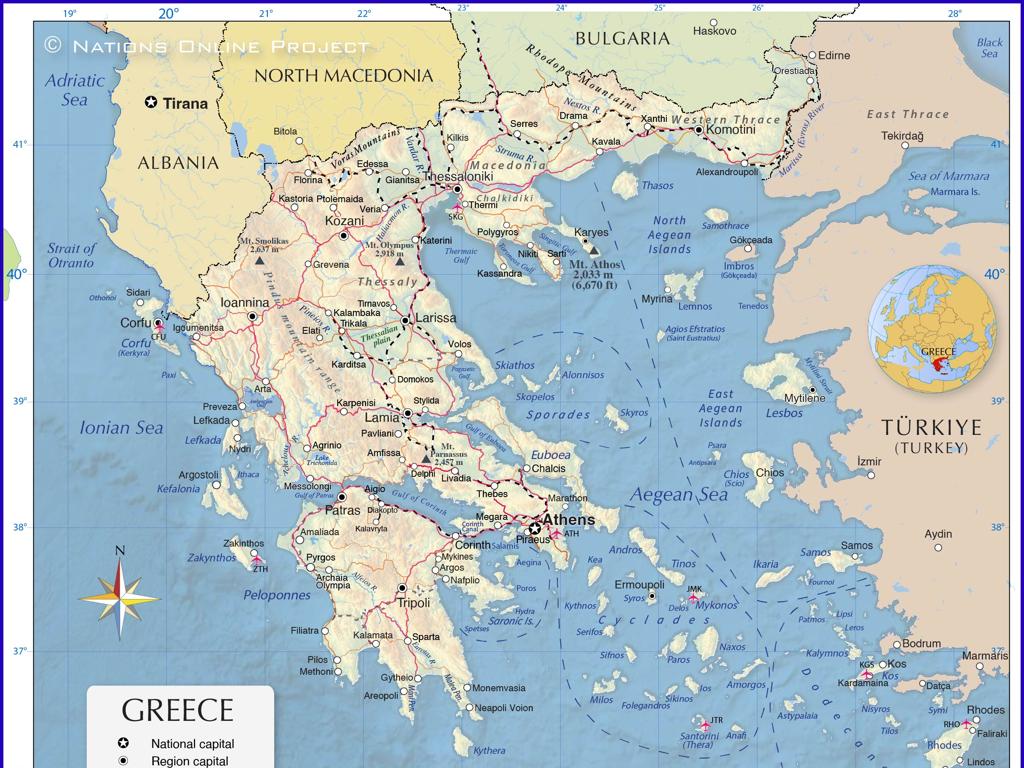Region Profile: West And Central Africa
Subject: Social studies
Grade: Sixth grade
Topic: Africa: Society And Environment
Please LOG IN to download the presentation. Access is available to registered users only.
View More Content
Exploring West and Central Africa
– Diversity of African regions
– Africa is not a monolith; it’s rich in different cultures, climates, and landscapes.
– Spotlight on West and Central Africa
– West and Central Africa are known for their vibrant cultures, languages, and history.
– Significance of regional studies
– Studying regions helps us appreciate the uniqueness and challenges faced by different communities.
– Cultural and environmental richness
– These regions are home to vast rainforests, diverse wildlife, and a tapestry of ethnic groups.
|
This slide introduces students to the vast and varied continent of Africa, with a particular focus on West and Central Africa. Emphasize that Africa is made up of many different regions, each with its own unique characteristics. Highlight the cultural diversity, languages, and historical significance of West and Central Africa. Discuss why it’s important to study different regions: to gain a deeper understanding of the world’s complexity and interconnectivity. Point out the environmental aspects, such as the Congo Basin’s rainforests, which are critical for global ecology. Encourage students to think about the importance of cultural and environmental conservation in these regions.
Physical Geography of West and Central Africa
– Major landforms and water bodies
– Mountains, rivers, and lakes shape the landscape
– Climate zones in the region
– From humid rainforests to arid deserts
– Natural resources and impact
– Resources like oil and diamonds shape economies
– Exploring regional diversity
|
This slide aims to give students an overview of the physical geography of West and Central Africa. Start by discussing the major landforms such as the Niger and Congo rivers, and significant bodies of water including Lake Chad. Explain the different climate zones, ranging from the humid equatorial climate to the Sahel’s arid conditions. Discuss how natural resources like oil in Nigeria and diamonds in Sierra Leone have both positive and negative impacts on the region’s development and conflicts. Encourage students to think about how geography can influence the economy and daily life. Use maps and images to help visualize the diverse geography of the region.
Cultural Overview of West and Central Africa
– Diversity in languages and ethnicities
– Over 1000 languages spoken, showcasing rich cultural heritage
– Traditional clothing and art forms
– Brightly colored fabrics, masks, and sculptures are significant
– Staple foods and agricultural practices
– Cassava, yams, and plantains are widely grown and eaten
|
This slide aims to give students a glimpse into the rich cultural tapestry of West and Central Africa. Emphasize the region’s linguistic diversity, with a multitude of languages spoken across different ethnic groups, which contributes to the vibrant cultural identity of the area. Highlight traditional clothing like the boubou or dashiki, and discuss the significance of art, such as masks and sculptures, in cultural rituals and storytelling. Discuss common agricultural practices and staple foods, which are integral to the daily life and economy of the region. Encourage students to explore the similarities and differences in their own culture and those of West and Central Africa.
Historical Highlights of West and Central Africa
– Key events that shaped the region
– Explore ancient empires, trade routes, and colonization.
– Colonial history impact
– Discuss how European powers divided the region and the effects.
– Post-independence progress
– Look at changes since countries gained independence.
|
This slide aims to give students a brief overview of the significant historical events that have influenced West and Central Africa. Start by discussing the rich history of ancient empires like Mali and Songhai, and the importance of trade routes such as trans-Saharan trade. Then, move on to the colonial period, explaining how European countries divided the region, exploited its resources, and the lasting effects of colonialism on the cultural and political landscape. Finally, discuss the progress and challenges faced by these nations since gaining independence, including efforts to develop economies and maintain stability. Encourage students to think critically about how history has shaped the current society and environment in West and Central Africa.
Economic Activities in West and Central Africa
– Major industries: agriculture, mining
– Cocoa, gold, and oil are key exports
– Natural resources drive the economy
– Abundant in minerals, oil, and timber
– Challenges in economic development
– Issues include infrastructure, governance
– Opportunities for growth and trade
– Investment in education and technology
|
This slide aims to give students an overview of the economic landscape in West and Central Africa. The region’s economy is heavily reliant on agriculture and mining, with cocoa, gold, and oil being significant exports. Natural resources play a crucial role, but the reliance on them also presents challenges such as price volatility and resource depletion. Economic development is hindered by inadequate infrastructure and political instability, but there are opportunities for growth through investment in education, technology, and sustainable practices. Encourage students to think about how these factors interplay and discuss the balance between utilizing natural resources and fostering sustainable development.
Environmental Challenges in West and Central Africa
– Climate change impacts
– Changes in weather patterns affecting agriculture and livelihoods
– Conservation and sustainability
– Efforts to protect wildlife and natural resources for the future
– Community ties to environment
– Dependence on natural resources for survival and cultural practices
– Encouraging eco-awareness
|
This slide addresses the environmental challenges faced by West and Central Africa, emphasizing the effects of climate change on the region’s weather patterns and the subsequent impact on agriculture and local livelihoods. Highlight conservation initiatives aimed at protecting endangered wildlife and promoting sustainable use of natural resources. Discuss the deep connection local communities have with their environment, relying on it for survival, cultural practices, and identity. Encourage students to think about how their actions can contribute to global efforts in preserving the environment. Provide examples of simple eco-friendly practices they can adopt.
Society Today in West and Central Africa
– Current societal challenges
– Issues like poverty, health, and inequality persist.
– Educational and technological impacts
– Education is key for development, while technology connects communities.
– Youth shaping the future
– Young people are pivotal for progress and innovation.
– Achievements in the region
– Successes in areas such as democracy, arts, and business.
|
This slide aims to provide an overview of the contemporary society in West and Central Africa, highlighting both the challenges and the achievements. Discuss the prevalent societal issues such as poverty, health crises, and social inequality. Emphasize the transformative role of education in uplifting communities and how technology is fostering connectivity and access to information. Highlight the importance of the youth as agents of change and the hope they represent for the future of the region. Acknowledge the strides made in various sectors, including the strengthening of democratic institutions, the flourishing of arts and culture, and the growth of local and regional businesses. Encourage students to think critically about how these factors interplay to shape the society in West and Central Africa.
Class Activity: Exploring West and Central Africa
– Form research groups
– Investigate West & Central Africa
– Focus on geography, culture, economy, and current issues
– Create a comprehensive region profile
– Include maps, traditions, economic data, and news
– Present profiles to the class
|
This activity is designed to engage students with the diverse aspects of West and Central Africa. Divide the class into small groups, assigning each to explore different facets of the region. They should look at physical geography, cultural practices, economic conditions, and contemporary challenges. Encourage the use of various resources such as books, reputable websites, and documentaries. Each group will compile their findings into a profile to share with their peers. This will help students develop research skills and a deeper understanding of the region. Possible activities: one group can focus on the Niger River’s influence on the region, another on the cultural significance of music in West Africa, a third on the economic impact of resources like cocoa, and a fourth on the challenges of climate change in the area.






